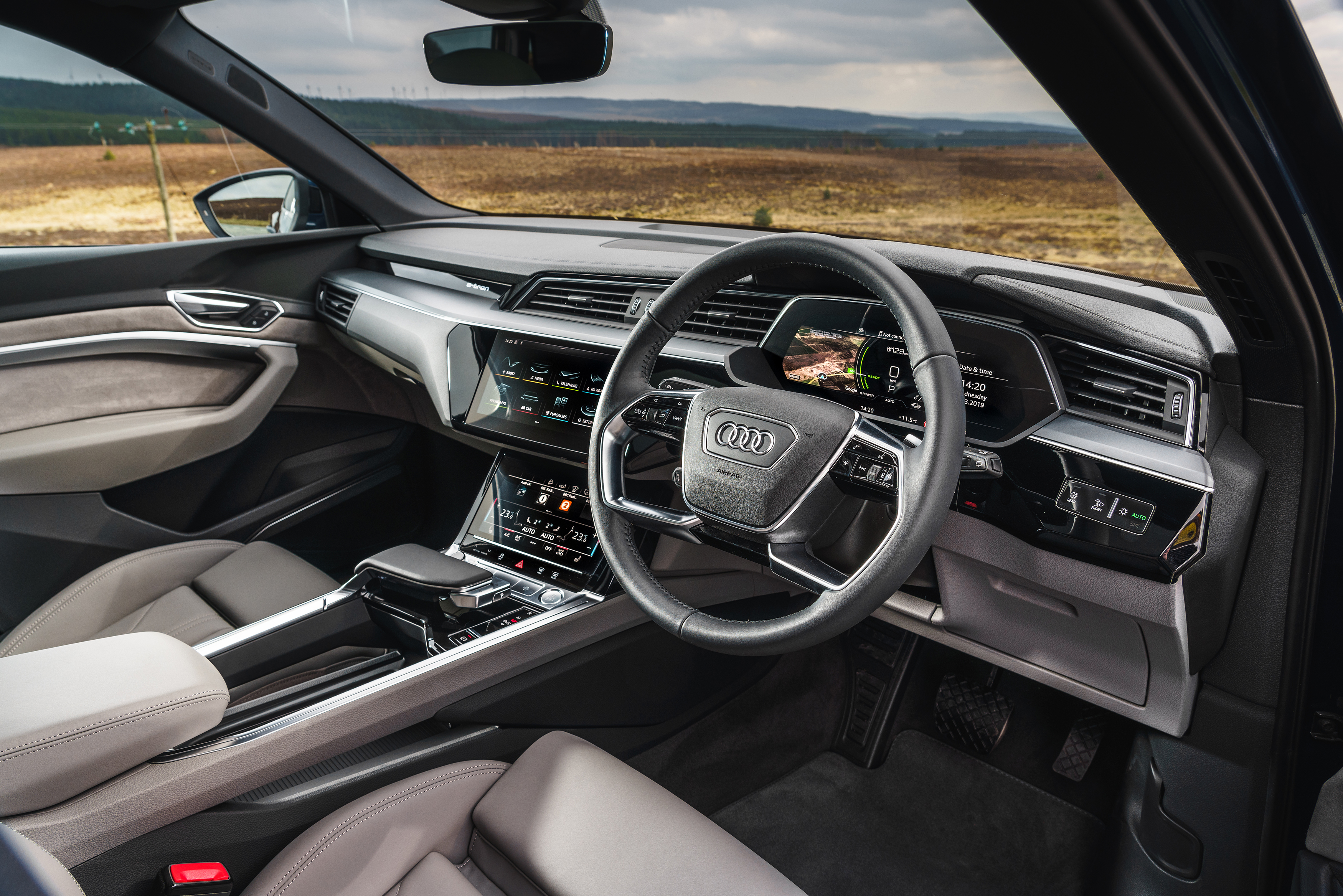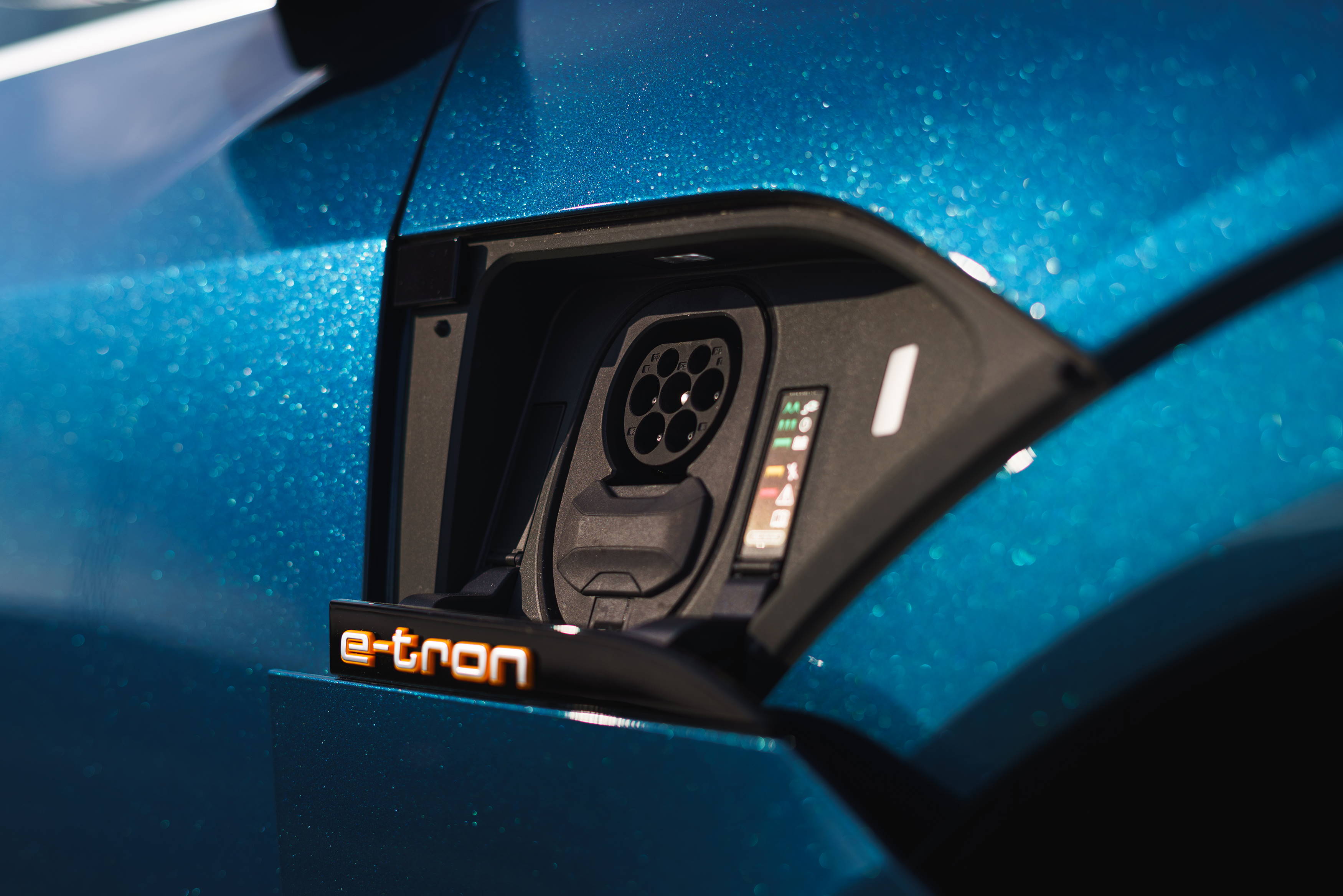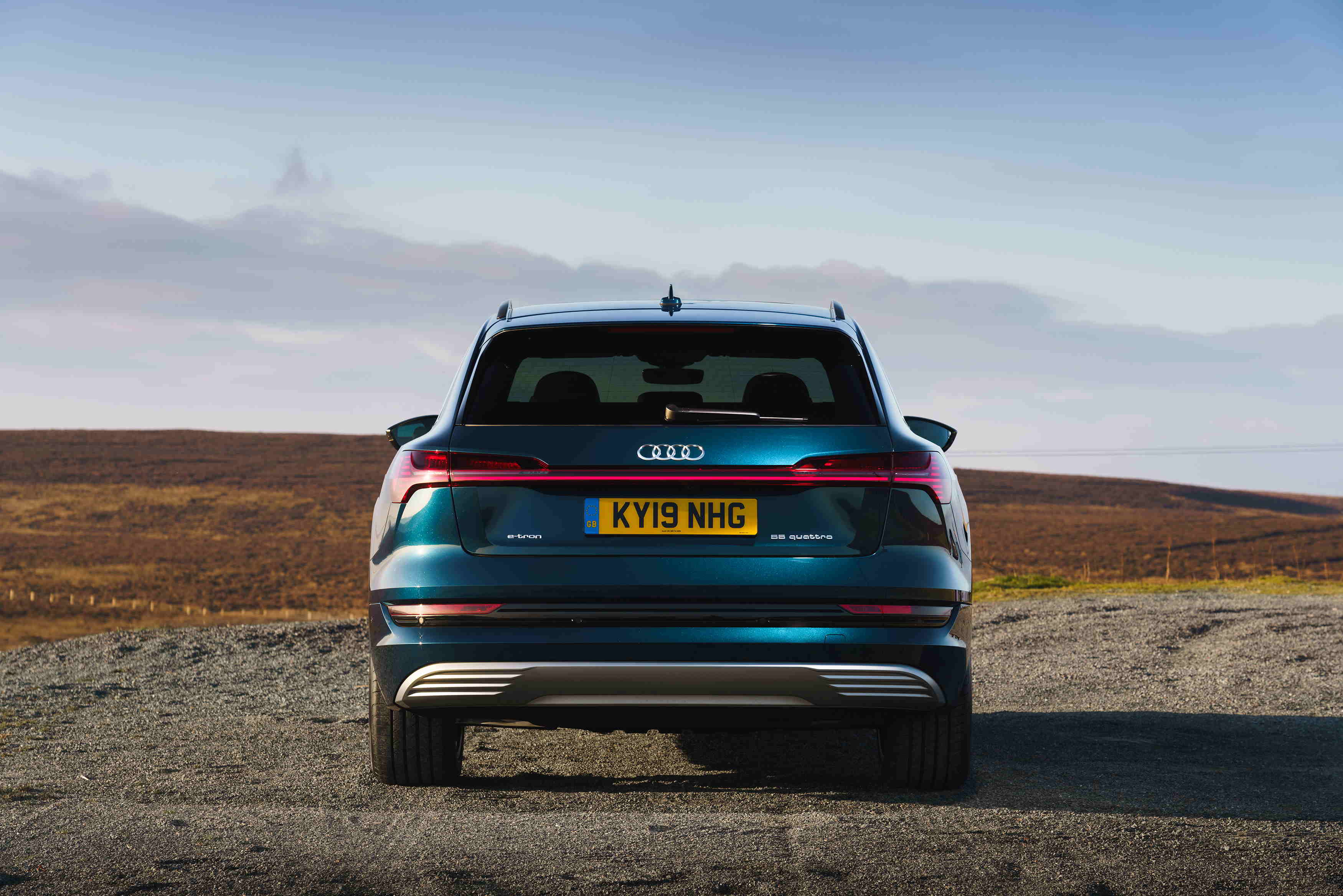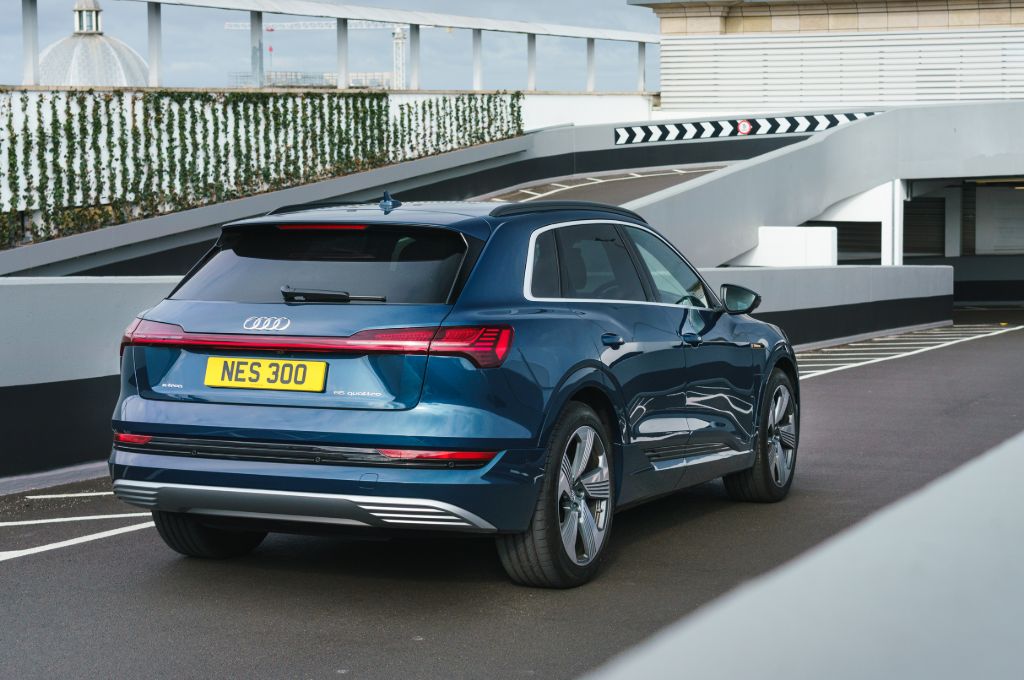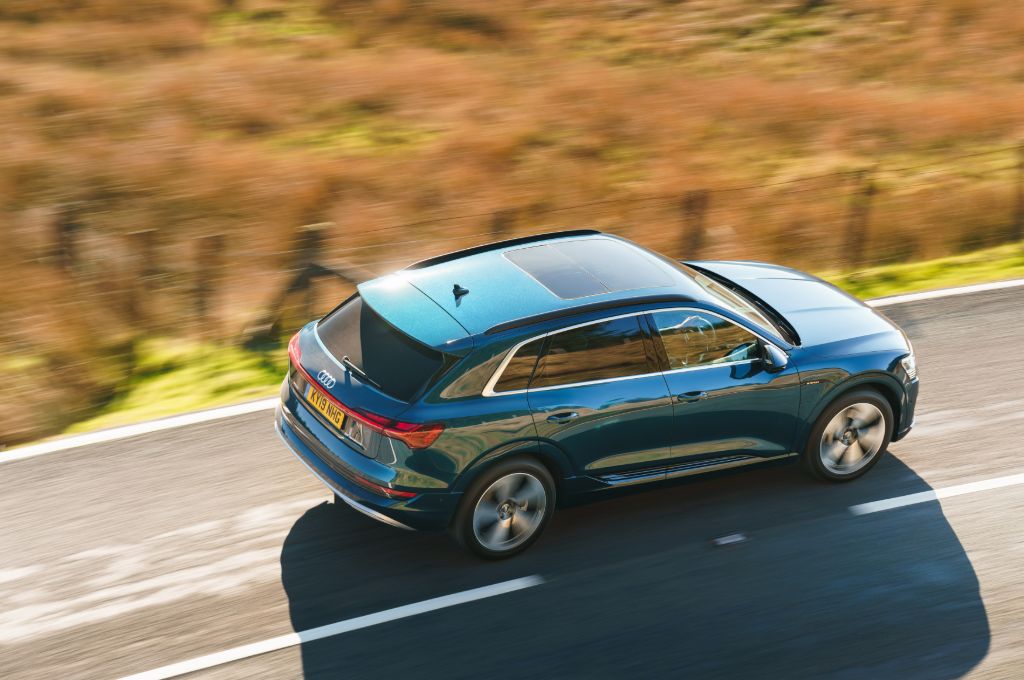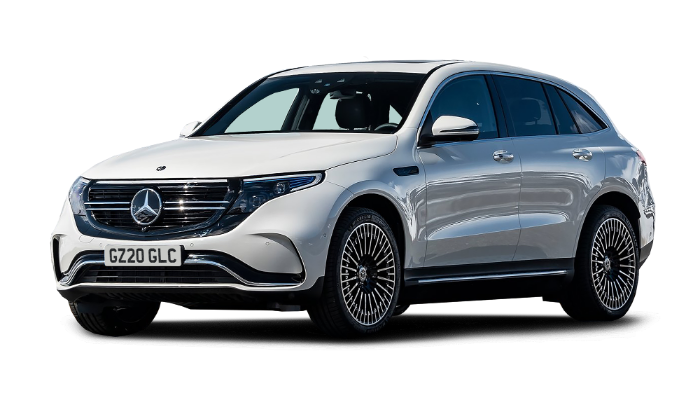Introduction
The Audi e-tron was one of the first premium electric cars to go on sale when it arrived. Don’t confuse it with the Audi e-tron GT, which is Audi’s big sports saloon that arrived later. The e-tron is a large, five-seat electric SUV that originally took on the Jaguar I-Pace and Mercedes EQC.
It was revealed in 2018 and went on sale in the UK in 2019, which isn’t long ago in the scheme of most vehicles, but battery- and electric car technology has evolved and moved on a lot in that time. As a result, the e-tron aged quickly and in 2023 Audi gave it a heavy refresh by restyling it and badging it the Audi Q8 e-tron – in line with its newer stablemates, the Q4 and Q6 e-tron.
It was offered with two batteries of 64.7- or 86.5kWh usable capacity (71- or 95kWh total capacity).
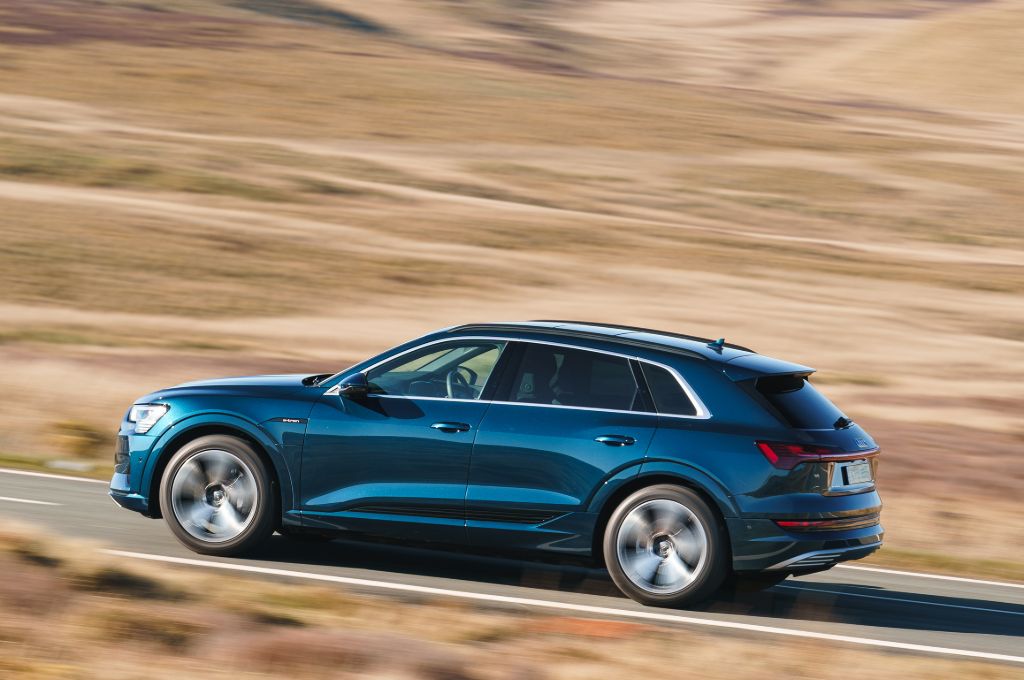
The bigger battery was the only option initially – in the Audi e-tron 55 - and came with an official range of 233 miles. Then the smaller battery arrived in the e-tron 50, with a claimed range of 190 miles.
All Audi e-tron models are four-wheel drive, and no – we don’t know why they’re badged 55 and 50, either. They just are. Don’t expect to achieve those claimed range figures, either, but speaking of range…
Check out the hundreds of used electric Audis for sale on Electrifying.com
A sleeker, coupe-like e-tron Sportback joined the range, too, and manages slightly better range – but not enough to make a useful difference.
Charging speeds on the Audi e-tron peaked at 150kW, which felt incredibly cutting-edge at the time but now looks just fine. It should manage a 100 mile top-up in roughly 15- to 20 minutes, provided you’re charging at a powerful enough DC rapid charging station.
And don’t worry – the e-tron uses the same Type 2 and CCS sockets (which are the European standard) as almost every other electric car, so it will be compatible with all public- and home chargers across the UK and Western Europe.
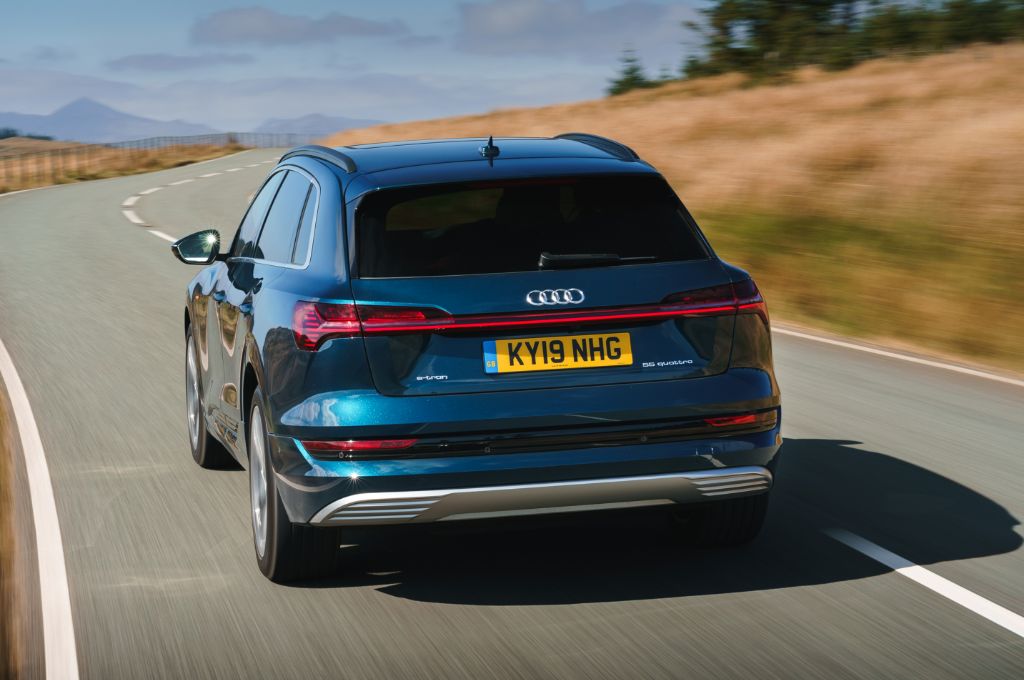
If you’re looking at the newer Audi Q8 e-tron, it came with slightly faster charging and bigger batteries for usefully more range. It makes a much more compelling long-range car, but it’s also a lot more expensive.
You can read all about the Audi Q8 e-tron in our new car review, here. Just avoid the awful camera side-mirrors (which are optional, thankfully). Given that it’s ultimately a facelift of the e-tron, you should also read on to find out what potential reliability issue may be.
Otherwise, we’ll be focussing on the older 2019 – 2022 Audi e-tron for the remainder of this used review.
What’s the real-world range of a used Audi e-tron?
Real-world range will be a sticking point for many in the Audi e-tron, as these were never very efficient cars. You were lucky to see 2.4 miles/kWh, so even when new you could expect a real-world range of 200 miles at best from the e-tron 55 (which is more powerful and the least efficient of the e-tron models), or 150 miles in winter. The e-tron 50 would typically manage around 130- to 160 miles.
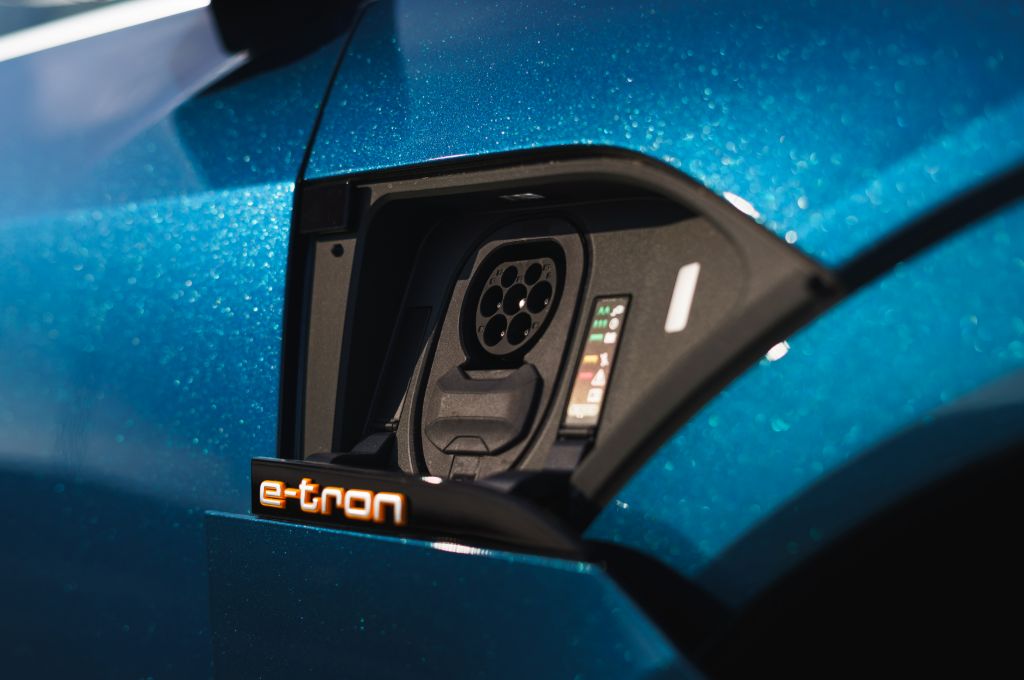
Of course, electric car batteries do degrade over time, so make sure to get a battery health test on any used electric car, and factor in the range loss that you will experience as a result. For instance, if you buy an e-tron 55 that has 90% of its battery health remaining, that means you’ll lose around 10% of the real-world range, and can expect more like 135- to 180 miles. If you do want longer range, don’t forget that you can check out the Audi Q8 e-tron, or alternatives like a used Tesla Model Y, Ford Mustang Mach-E or BMW iX3 are good value, longer range SUVs.
How long will the battery on the Audi e-tron last?
The Audi e-tron uses lithium-ion NMC batteries, and there are no reports of any serious issues with longevity. You should always expect to lose roughly 1- to 2% battery life from any electric car, so if you’re buying a five-year old Audi e-tron you should assume a 10% loss of battery as a very rough estimate. However, we always recommend that you get an independent battery health check done, which can show you exactly what the battery state-of-health (SoH) is on your car. A good dealer will should be able to offer this, albeit some may charge a small fee to carry it out.

How reliable is a used Audi e-tron and what are the common problems?
- Coolant can leak into the electric motors due to a faulty seal. Some owners have reported Audi covering some of the costs of this even on vehicles out of warranty, as this has proven to be a widespread issue, but it’s not at all guaranteed if the vehicle isn’t within its three-year, 60,000 mile warranty. It will put the vehicle out of action, and can cost many thousands to repair. It’s also a tricky issue to spot, as the leak is internal, but you may see signs of coolant dripping from the car if there’s a problem.
- Water can leak into the high voltage battery, which can also be a very expensive issue.
- The infotainment screen can freeze, but generally restarts when the car is turned off- and on again.
- Some owners report software faults with the charging system, which can prevent it from charging.
Which is the best version to buy?
There were a lot more big battery Audi e-tron models sold initially, so they’re more widely available. Given that the real-world range is middling at best, we’d stick with the e-tron 55. Having said that, the e-tron isn’t likely to be your car of choice if you do a lot of mileage, and if you’re just looking for a spacious, plush used electric runaround that’ll mostly do shorter trips and charge at home, the e-tron can suddenly make a lot of sense. If that’s what you’re going to do with it, don’t discount the smaller battery models, as they’ll do just as good a job.

All were fairly well equipped, and a lot were specced in high-end trims. The boot and rear seats are spacious, too, and you get Isofix fittings plus a raft of safety assistance systems on every e-tron, so it could be a great used family car. Just avoid the camera side mirrors that were an option on the Audi, as they're not good in the dark and are generally far worse to use than normal side mirrors.
How long is the warranty?
The Audi gets a three year, 60,000 mile warranty on the vehicle, while the high voltage battery is covered for eight years and 100,000 miles. It’s worth pointing out that Tesla, Kia, Genesis, Lexus and Hyundai all offer much longer warranties on rather posh-feeling big electric cars, so do check them out if you’re keen on bagging a used EV that’s still got manufacturer warranty remaining.

What are the ownership and running costs of an Audi e-tron?
The Audi e-tron is a powerful and heavy SUV, and so it should come as no surprise that it falls into high insurance bands, and will also wear through tyres fairly quickly. Those tyres won’t be cheap to replace, either. Mind you, if you’re charging at home then it’ll cost much less to fuel than an equivalent petrol- or diesel luxury sports SUV.
Being an electric car, servicing will also be less frequent than on a petrol- or diesel. The Audi e-tron will bing a message onto your dash when it’s time for a service, but that should happen roughly every two years or 20,000 miles. Budget roughly £500 for a minor service every couple of years, and £1000 for a major service every four years.
What other cars should I consider?
We’ll be honest, given some fairly major potential reliability problems and the fact that the Audi e-tron now feels a bit dated and shorter range, we’d struggle to recommend it. It feels nice inside, it’s rapid to drive, and it looks appealingly posh, but there are better electric SUVs out there for similar money. Consider the Tesla Model Y, BMW iX3, Genesis GV70 Electrified, VW ID.4, Kia EV6 and Hyundai Ioniq 5, to see if you can’t find an electric family SUV that’s still got that luxury feel but offers more for your money.
Like the idea of a used Audi e-tron? Try these...
Want all the latest electric car news, reviews and videos? Sign up to the Electrifying newsletter, and don't forget to check out the Electrifying podcast.











